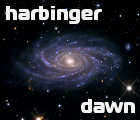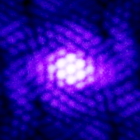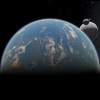|
Stellar Classification Suggestions
|
|
| n3xt | Date: Wednesday, 17.10.2012, 12:35 | Message # 1 |
 Explorer
Group: Users
 Netherlands
Netherlands
Messages: 184
Status: Offline
| Hellooow guyz 
I would love to see this some day in S.E.
But before I post my suggestions, I would like to know why S.E. classifies some supposedly ''orange giants'' and ''red giants'' as K and M ''V'' wich is a main sequence star. I encounter this quite alot.
Anyway here's my suggestion on both luminosity classes (a little bit additional) and color appearance (not conventional)
''Extremely luminous supergiants'' (hypergiants)
- Ia-0
- Ia+
Spectral types: O, B, A, F, G and K
''Luminous supergiants'' (hypergiants)
- Ia
- Ia-Iab
Spectral types: O, B, A, F, G, K and M
''Bright supergiants'' (hypergiants)
- Iab-Ia
- Iab
- Iab-Ib
Spectral types: O, B, A, F, G, K and M
''Supergiants''
- Ib-Iab
- Ib
- Ib-II
Spectral types: O, B, A, F, G, K and M
''Bright giants''
- II-Ib
- II
- II-III
Spectral types: O, B, A, F, G, K and M
''Giants''
- III-II
- III
- III-IV
Spectral types: O, B, A, F, G, K and M
''Subgiants''
- IV-III
- IV
- IV-V
Spectral types: O, B, A, F, G and K (did anyone ever noticed an M-type subgiant? Well, I haven't)
''Main sequence stars''
- V-IV
- V
- V-VI
Spectral types: O, B, A, F, G and K
(Red dwarfs: late K to late M)
(Brown dwarfs: late M to late T)
''Subdwarfs''
(Main sequence):
- VI-V
- VI
Spectral types: late F, G, K and early M
(Hot subdwarfs & cool subdwarfs):
- sd (subdwarfs)
- esd? (extreme subdwarfs?)
Spectral types: O, B and early A (hot subdwarfs) or late M, L and T (cool subdwarfs)
''White dwarfs''
- D
Spectral types: O, B, A, F, G, K and M
Not much though but would be cool to see the additional ype ''Iab'' as bright supergiants...
Anyway on to color appearance (non-conventional)
O2 - B5 = blue
B6 - A9 = blue-white
F0 - F7 = white
F8 - G3 = yellow-white
G4 - G7 = yellow
G8 - K3 = yellow-orange
K4 - K7 = orange
K8 - M4 = orange-red (note: red dwarfs would remain original but a K9 V star as an orange-red main sequence star)
M5 - M9 = red
L0 - T9 = brown dwarfs
Edited by n3xt - Thursday, 18.10.2012, 16:01 |
| |
| |
| HarbingerDawn | Date: Wednesday, 17.10.2012, 14:49 | Message # 2 |
 Cosmic Curator
Group: Administrators
 United States
United States
Messages: 8717
Status: Offline
| n3xt, all you did was basically post the Morgan-Keenan spectral classification system - which is already used in SE - with the addition of Iae as a luminosity class, and then reclassifying the color boundaries. I'm curious as to what this is supposed to accomplish.
First, let's start with your luminosity classes and their logic. You say that Ia-0, Ia+, and Iae are all different types of hypergiants, with slightly different cutoffs in spectral type. Well, what if you have a B-type hypergiant? Would it be B Ia-0, B Ia+, or B Iae?
As for the colors, there is some merit in what you suggest, but the colors don't really matter all that much imo. My first impression upon using SE was that descriptions like "Yellow dwarf" and "Red bright giant" were unnecessary. As long as you can see the spectral classification then you know all those things. Now I can see the value that such a system has for people unfamiliar with spectral types, it helps you to get to know the classes. So because of this using the "traditional" colors for the temperature classes is the best choice as it is an educational tool and not meant to be as descriptive as possible.
The best idea for a new stellar classification system would be to come up with a completely original one, but again that would go against the purpose of SpaceEngine which is to be a tool for people to learn about real astronomy in addition to exploring the universe. Also, trying to convert real world classes into a different system would be a pain when adding stars to the catalog.
Quote (n3xt) I would like to know why S.E. classifies some supposedly ''orange giants'' and ''red giants'' as K and M ''V'' wich is a main sequence star.
Show me one case in which SE labels a star as a giant but lists its luminosity class as V.
All forum users, please read this!
My SE mods and addons
Phenom II X6 1090T 3.2 GHz, 16 GB DDR3 RAM, GTX 970 3584 MB VRAM
|
| |
| |
| smjjames | Date: Wednesday, 17.10.2012, 14:58 | Message # 3 |
|
World Builder
Group: Users
 United States
United States
Messages: 913
Status: Offline
| Quote (HarbingerDawn) Quote (n3xt)
I would like to know why S.E. classifies some supposedly ''orange giants'' and ''red giants'' as K and M ''V'' wich is a main sequence star.
Show me one case in which SE labels a star as a giant but lists its luminosity class as V.
http://en.spaceengine.org/forum/4-705-10479-16-1346718430 It says G0 III, but the luminosity is that of a K main sequence star. The mass is of a G main sequence though and the diameter is probably K V, or low G V.
It's a rare bug, I've only seen a few more since, with similar properties (not sure if they're always labelled G0 though)

Edited by smjjames - Wednesday, 17.10.2012, 15:04 |
| |
| |
| HarbingerDawn | Date: Wednesday, 17.10.2012, 15:24 | Message # 4 |
 Cosmic Curator
Group: Administrators
 United States
United States
Messages: 8717
Status: Offline
| Quote (smjjames) It's a rare bug, I've only seen a few more since, with similar properties
I've seen that as well, but that's not quite the same as SE mislabeling a luminosity class.
All forum users, please read this!
My SE mods and addons
Phenom II X6 1090T 3.2 GHz, 16 GB DDR3 RAM, GTX 970 3584 MB VRAM
|
| |
| |
| n3xt | Date: Thursday, 18.10.2012, 01:18 | Message # 5 |
 Explorer
Group: Users
 Netherlands
Netherlands
Messages: 184
Status: Offline
| HarbingerDawn
Quote Show me one case in which SE labels a star as a giant but lists its luminosity class as V.
Well here you got it xD
I have to admit that this looks very nice for a giant star to be so roundish xD
Edited by n3xt - Thursday, 18.10.2012, 01:21 |
| |
| |
| HarbingerDawn | Date: Thursday, 18.10.2012, 01:26 | Message # 6 |
 Cosmic Curator
Group: Administrators
 United States
United States
Messages: 8717
Status: Offline
| Quote (n3xt) Well here you got it
No. It is labeled as a dwarf, which matches its luminosity class. It may be the size of a giant, but its labels are consistent with each other, which is what I meant.
All forum users, please read this!
My SE mods and addons
Phenom II X6 1090T 3.2 GHz, 16 GB DDR3 RAM, GTX 970 3584 MB VRAM
|
| |
| |
| smjjames | Date: Thursday, 18.10.2012, 01:48 | Message # 7 |
|
World Builder
Group: Users
 United States
United States
Messages: 913
Status: Offline
| Maybe let Space Engineer have his say? I dunno.
That one does look a bit odd to me, although it is a young star.

|
| |
| |
| Watsisname | Date: Thursday, 18.10.2012, 01:57 | Message # 8 |
 Galaxy Architect
Group: Global Moderators
 United States
United States
Messages: 2613
Status: Offline
| Harbinger is correct, the 'dwarf' luminosity class matches its designation as a V (main sequence) star. All main sequence stars are considered dwarfs. The problem here is that SE (rather the catalog it uses, since I see that is not a procedural star) has the wrong luminosity designation because a main-sequence star with that mass would be blue-white with a surface temperature over 10,000 Kelvins and appear not very dissimilar to Vega. Instead its physical properties match that of a giant (class III) like Aldebaran.

Edited by Watsisname - Thursday, 18.10.2012, 01:59 |
| |
| |
| n3xt | Date: Thursday, 18.10.2012, 02:18 | Message # 9 |
 Explorer
Group: Users
 Netherlands
Netherlands
Messages: 184
Status: Offline
| HarbingerDawn
Quote First, let's start with your luminosity classes and their logic. You say that Ia-0, Ia+, and Iae are all different types of hypergiants, with slightly different cutoffs in spectral type. Well, what if you have a B-type hypergiant? Would it be B Ia-0, B Ia+, or B Iae?
Well to be honest I've read on some page that yellow hypergiants are typically classified as ''Ia-0'' or Ia-0e
While blue hypergiants are typically Ia+ and occasionally Ia-0 aswell or Iae+ or Ia-0
But for red hypergiants are usually just Ia, Iae (emission lines
I agree the ''e'' is just an additional spectral feature.
Some supposed red hypergiants are even Iab.
That's because red hypergiants are not really classified by their luminosites.
The yellow ones are both classified by their luminosities as well as diameters.
And for the blue ones they should be referec as ''extremely luminous supergiants'' or very... Since they're too small typically to be hypergiants but their luminosites exceed them rediculously higher.
Sorry for my broken English I'm tired xD
Edited by n3xt - Thursday, 18.10.2012, 02:25 |
| |
| |
| SpaceEngineer | Date: Thursday, 18.10.2012, 14:12 | Message # 10 |
 Author of Space Engine
Group: Administrators
 Russian Federation
Russian Federation
Messages: 4800
Status: Offline
| Quote (n3xt) Well here you got it xD I have to admit that this looks very nice for a giant star to be so roundish xD
This is a mistake in the catalog used in SE. Maybe downloading (and converting into SE format) the last edition of HIPPARCOS catalog would fix this.

|
| |
| |